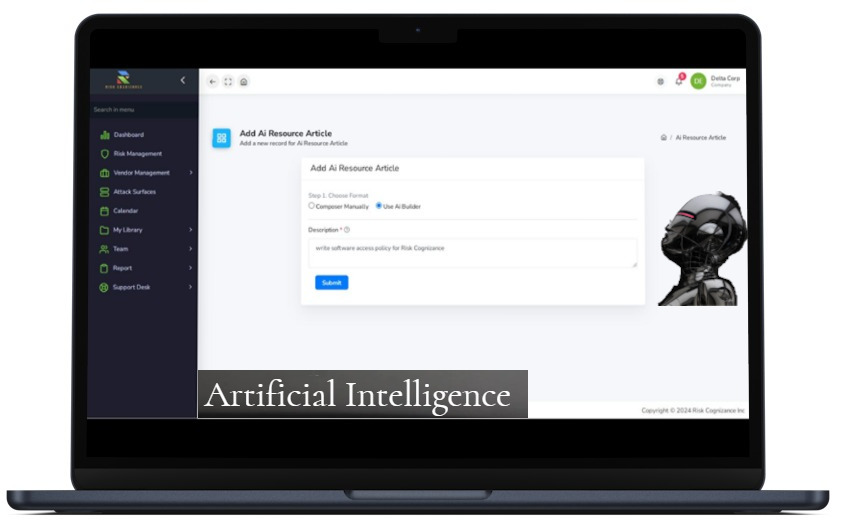MSP vs. MSSP: Understanding the Difference
While both Managed Service Providers (MSPs) and Managed Security Service Providers (MSSPs) are third-party vendors that deliver services to organizations, the primary distinction lies in the scope and nature of their offerings. Understanding the unique focus of each can help businesses decide which type of provider is best suited for their needs.
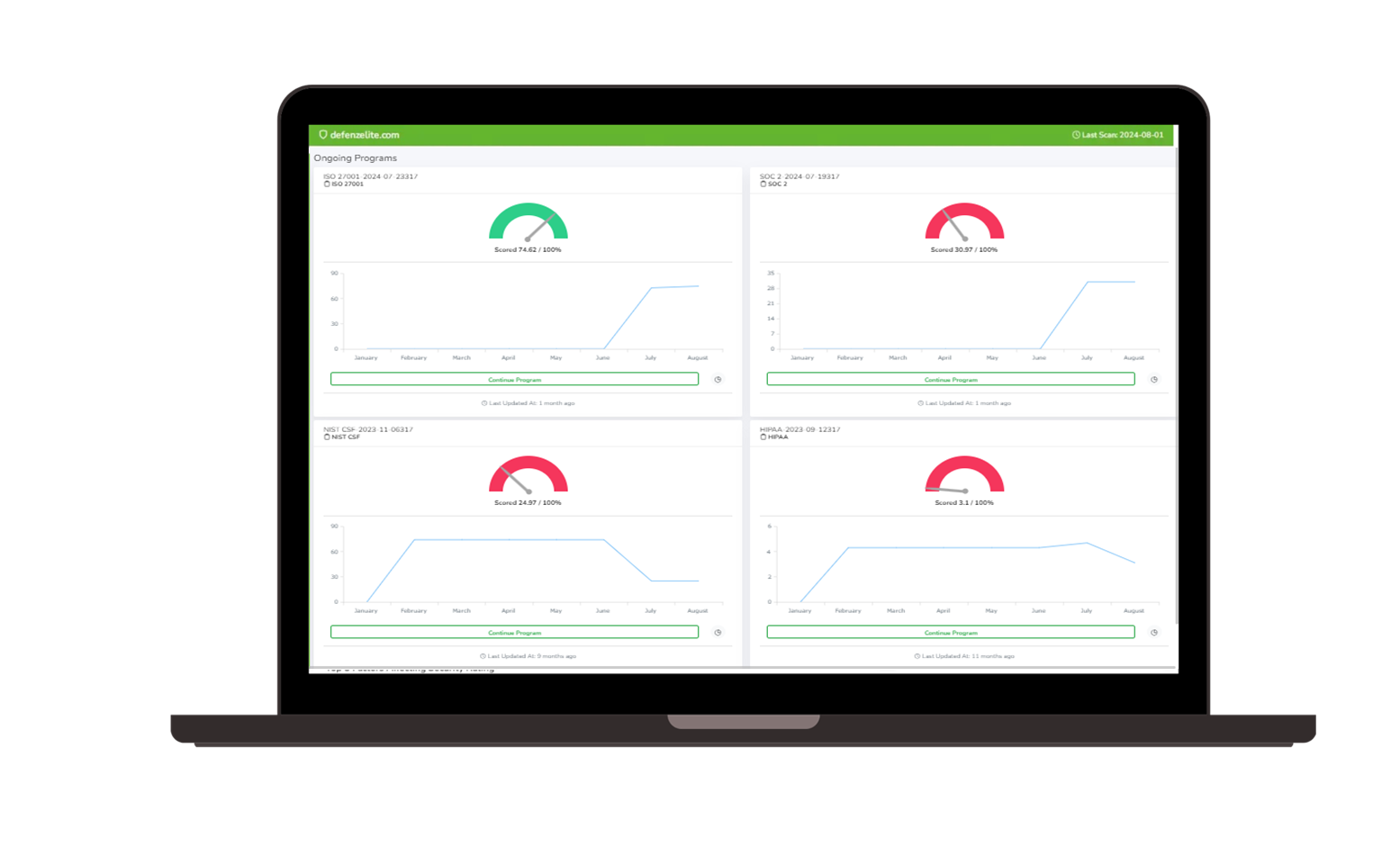 Governance, Risk, and Compliance (GRC) | 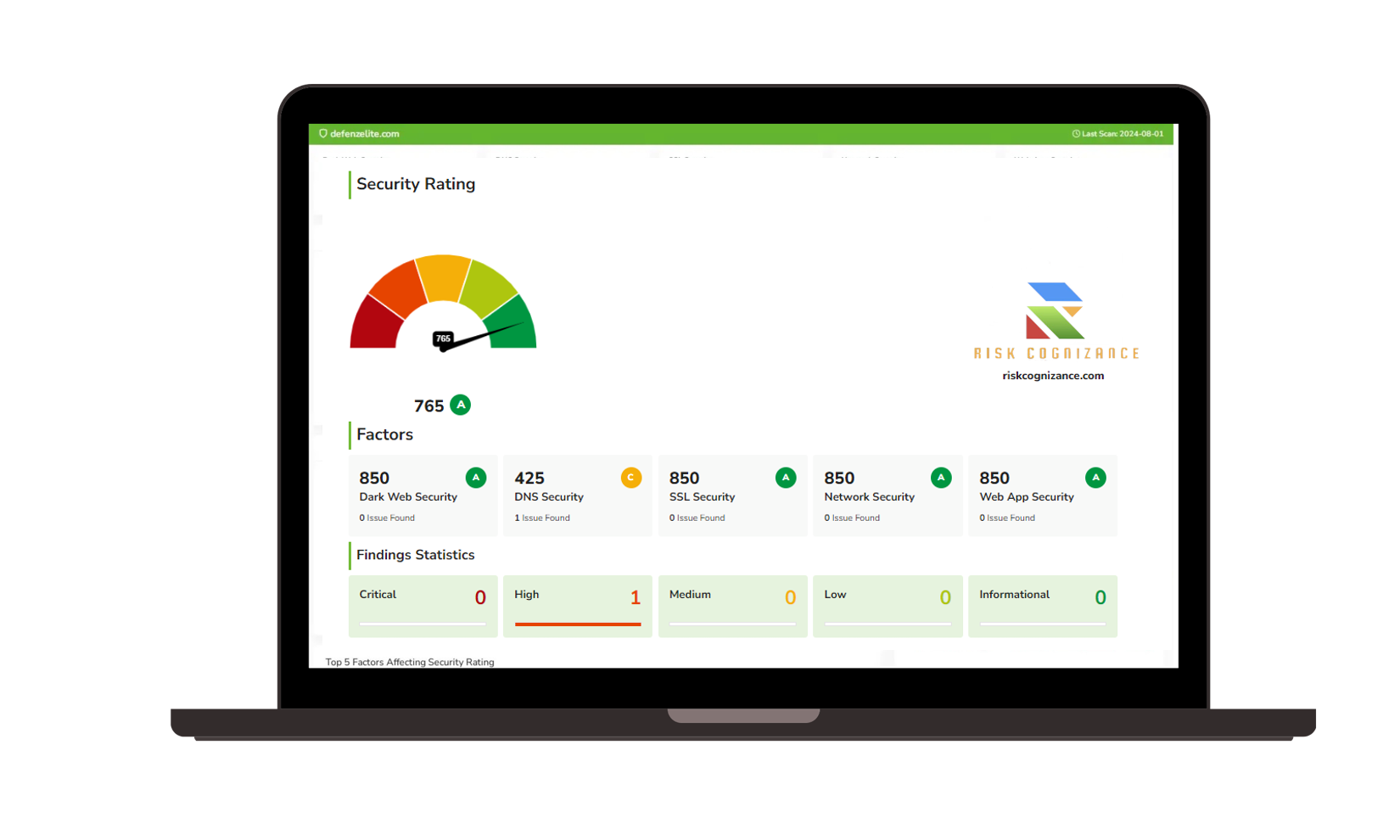 Third-party Risk Management |
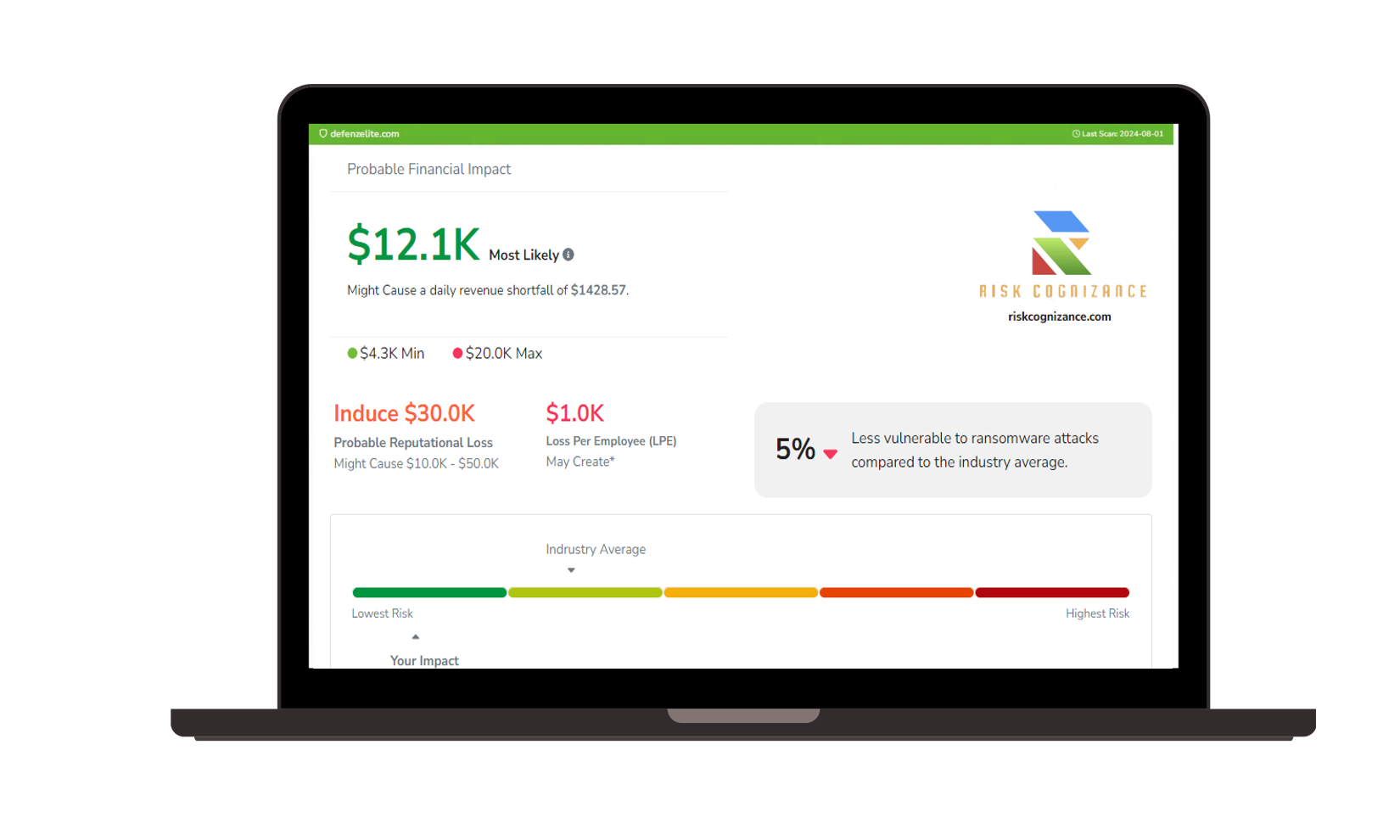 Ransomware Susceptibility | 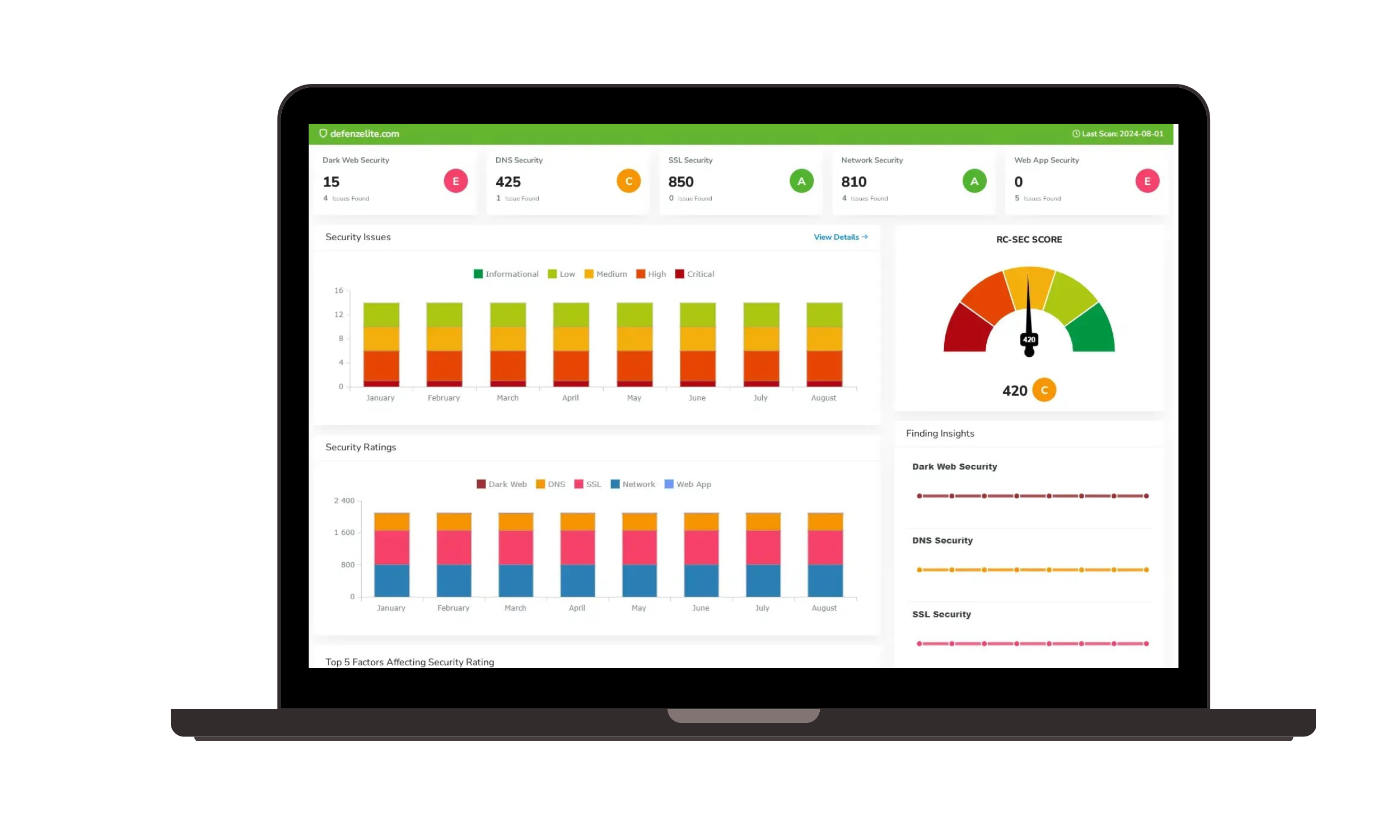 GRC and Attack Surface |
Artificial Intelligence | |
Managed Service Providers (MSPs)
An MSP typically focuses on the management of IT infrastructure and end-user systems. They provide services such as network management, server maintenance, help desk support, and software updates. Their goal is to ensure the smooth operation of an organization's IT environment and to maximize uptime and productivity.
Key Services Offered by MSPs:
- Network and Server Management: Ensures network reliability and addresses server-related issues.
- Help Desk Support: Provides technical support for end-users, troubleshooting common issues.
- Data Backup and Recovery: Manages backups and data recovery plans in case of system failure.
- Patch Management: Keeps software up to date to reduce vulnerabilities.
- IT Infrastructure Monitoring: Tracks and monitors systems to detect and resolve issues before they impact business operations.
MSPs are ideal for organizations looking to outsource their general IT needs and improve the efficiency of their technology managementManaged Security Service Providers (MSSPs)
An MSSP, on the other hand, specializes in managing and improving an organization’s cybersecurity posture. They focus on identifying, preventing, and responding to security threats across an organization's environment. Their services include threat monitoring, vulnerability management, incident response, and compliance management.
Key Services Offered by MSSPs:
- Security Operations Center (SOC) Management: 24/7 monitoring for threats and real-time alerts.
- Threat Intelligence and Analysis: Analyzes emerging threats and proactively protects against them.
- Vulnerability Assessments: Identifies potential weaknesses in an organization’s IT environment.
- Incident Response and Forensics: Provides rapid response and investigation support during a security breach.
- Compliance Management: Assists with maintaining compliance with regulations like GDPR, HIPAA, or PCI DSS.
MSSPs are suited for organizations with a greater focus on cybersecurity, seeking to defend against advanced threats and ensure data protection and regulatory compliance..MSP vs. MSSP: Which One Do You Need?
Choosing between an MSP and an MSSP depends largely on an organization’s priorities and the level of protection required. Businesses with basic IT support needs and minimal security concerns may find an MSP sufficient for their needs. However, companies looking to enhance their security posture, safeguard sensitive data, and ensure compliance will benefit more from an MSSP.
2. RSA Archer
Key Differences Between MSPs and MSSPs:
- Scope of Services: MSPs manage IT infrastructure, while MSSPs focus on cybersecurity.
- Service Focus: MSPs emphasize operational efficiency; MSSPs prioritize security and risk mitigation.
- Monitoring and Response: MSPs monitor for performance issues; MSSPs monitor for security threats.
- Compliance Management: MSSPs often include compliance and governance services, which are typically not offered by MSPs.
In some cases, organizations may choose to work with both an MSP and an MSSP to cover the full spectrum of IT and security management. By partnering with a dedicated MSSP, businesses can enhance their security posture while still benefiting from the traditional IT support provided by an MSP.
Integrated Solutions for MSPs and MSSPs
Risk Cognizance GRC Platform provides a versatile solution for both MSPs and MSSPs, enabling them to streamline their governance, risk, and compliance operations. With tools designed to manage both IT and cybersecurity risks, the platform allows providers to deliver a holistic approach to client management, bridging the gap between traditional IT services and advanced security management.
For MSPs: The platform supports IT service management functions, helping to automate tasks, monitor compliance, and maintain operational integrity.
For MSSPs: The GRC platform integrates security management, real-time risk assessment, and compliance oversight, allowing MSSPs to deliver advanced security services and protect against evolving threats.
By leveraging a unified platform like Risk Cognizance, MSPs and MSSPs can better serve their clients, improve service delivery, and provide comprehensive risk and compliance management. This alignment empowers providers to evolve with the growing needs of their clients, whether in traditional IT management or in advanced cybersecurity
Contact us to learn how Risk Cognizance can help your business navigate the complexities of IT and cybersecurity management.
FAQ: Understanding the Difference Between MSPs and MSSPs
1. What is an MSP?
A Managed Service Provider (MSP) is a third-party company that manages and oversees an organization's IT infrastructure, networks, and end-user systems. Their primary focus is on ensuring the smooth operation of IT services, providing maintenance, support, and performance monitoring.
2. What is an MSSP?
A Managed Security Service Provider (MSSP) specializes in cybersecurity and focuses on protecting organizations from digital threats. They offer services such as threat monitoring, incident response, vulnerability management, and compliance support to safeguard an organization’s data and IT environment.
3. What is the primary difference between an MSP and an MSSP?
The primary difference is in the scope of services offered. An MSP handles general IT management, ensuring that systems are functioning optimally, while an MSSP focuses specifically on cybersecurity, providing protection against cyber threats and ensuring compliance with security regulations.
4. Can an MSP offer security services?
Yes, many MSPs offer basic security services like antivirus management, firewall configuration, and software updates. However, these services typically do not provide the advanced threat detection, continuous monitoring, and incident response capabilities of an MSSP.
5. Should I choose an MSP or an MSSP for my business?
Choosing between an MSP and an MSSP depends on your organization’s needs. If your primary concern is managing IT operations efficiently, an MSP is ideal. If you need a greater focus on cybersecurity, protecting sensitive data, and ensuring compliance, an MSSP is a better fit.
6. Can a business use both an MSP and an MSSP?
Yes, many organizations choose to work with both an MSP and an MSSP. This approach allows them to address both IT management and cybersecurity concerns comprehensively. Some providers offer integrated services that cover both areas.
7. What services does an MSP typically offer?
MSPs usually provide services such as:
- Network and server management
- Data backup and recovery
- Help desk support
- Patch management
- IT infrastructure monitoring
- Cloud services management
8. What services does an MSSP typically offer?
MSSPs typically provide:
- 24/7 security monitoring (SOC)
- Threat intelligence and analysis
- Vulnerability assessments and penetration testing
- Incident response and digital forensics
- Security compliance management
- Managed detection and response (MDR)
9. What are the benefits of partnering with an MSSP?
Partnering with an MSSP provides several benefits, including:
- Proactive threat detection and response
- Continuous monitoring of IT environments
- Expertise in handling advanced cyber threats
- Compliance management and audit support
- Reduced internal security management burden
10. Are there any compliance advantages to working with an MSSP?
Yes, MSSPs often have deep expertise in managing compliance for standards like PCI DSS, HIPAA, GDPR, and NIST. They help organizations maintain compliance by identifying gaps, implementing necessary controls, and continuously monitoring adherence to regulations.
11. What is the role of the Risk Cognizance GRC Platform for MSPs and MSSPs?
The Risk Cognizance GRC Platform is designed to support both MSPs and MSSPs in managing governance, risk, and compliance (GRC) activities. For MSPs, it helps streamline IT service management, automate compliance tracking, and monitor performance. For MSSPs, the platform integrates security management, real-time risk assessment, and compliance oversight to enhance the security services they offer.
12. How can MSPs and MSSPs benefit from using a GRC platform?
Using a GRC platform allows both MSPs and MSSPs to:
- Centralize risk and compliance management
- Automate compliance workflows
- Provide comprehensive risk assessments
- Enhance service delivery and client management
- Gain real-time visibility into IT and security performance
13. What should I look for when choosing between an MSP and an MSSP?
When choosing between an MSP and an MSSP, consider:
- Your primary needs (IT management vs. cybersecurity).
- Compliance requirements (e.g., industry regulations).
- Size of your organization (small businesses may need an MSP, while larger enterprises may benefit from an MSSP).
- In-house expertise (an MSSP may be necessary if you lack cybersecurity skills internally).
14. Can an MSP evolve into an MSSP?
Yes, many MSPs expand their services to include security and become hybrid providers. However, transitioning to an MSSP typically requires significant investment in cybersecurity technologies, skilled personnel, and processes to deliver comprehensive security services.
15. What are some common challenges when working with both an MSP and an MSSP?
Common challenges include:
- Coordination and communication between providers
- Overlapping responsibilities, which can lead to confusion
- Inconsistent reporting if data is not centralized
- Integration issues when systems are not aligned
To mitigate these challenges, businesses should establish clear roles, responsibilities, and communication channels between the MSP and MSSP.
For more information or to learn how Risk Cognizance can support your MSP or MSSP business, contact us today.


